First and Spruce ca. 1900
Introduction
Text-to-speech Audio
Looking north on First Street in the early 1900’s, one would have been able to see the Opera House, Post Office, Train Depot, Odd Fellows Hall, Aberdeen Store, as well as cafés, grocery stores and a bank. The railroad was in operation and riding the train or driving up the hill to the north would lead you to Seaview and Long Beach.
Images
Downtown Ilwaco, 1st St looking S. 5 Mile North Head Loop Run signage.
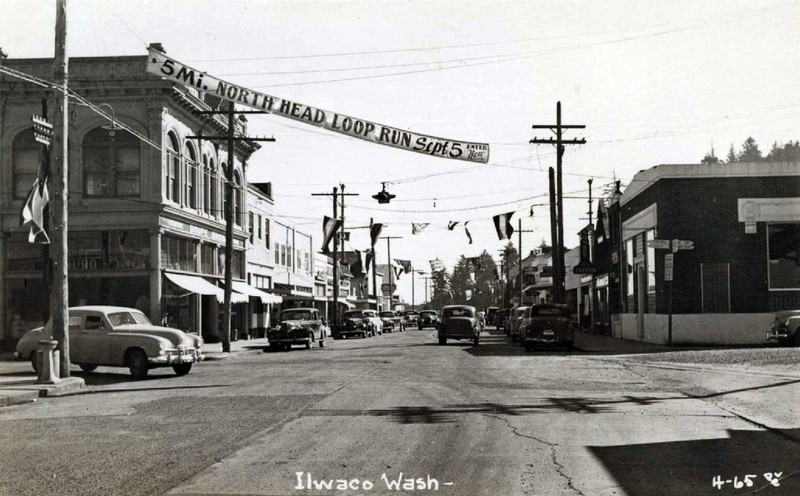
1st Street Ilwaco, c. 1918.
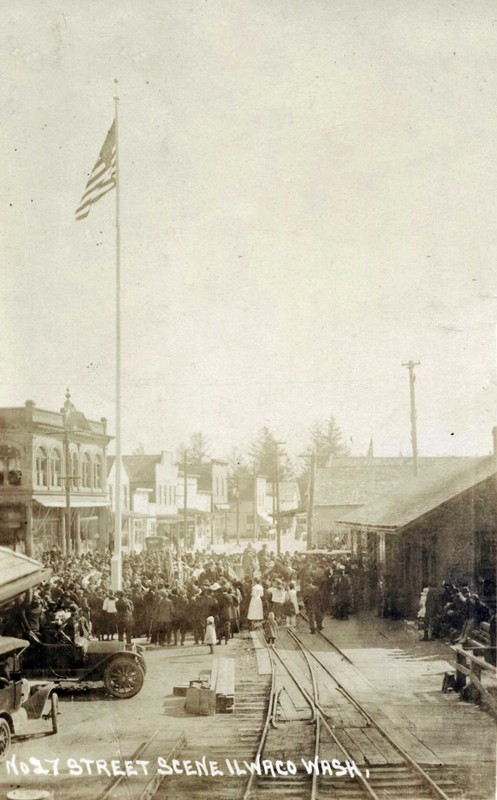
Ilwaco Street Scene on 1st Street.

First Street Ilwaco picturing the Opera House, Doupe Hardware Store and Oddfellows building.
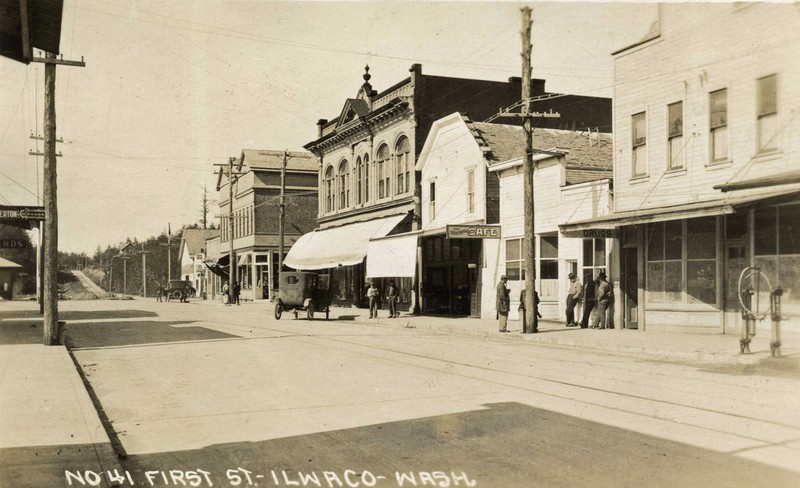
1st St. looking South, Ilwaco.

1st Street, Ilwaco c. 1920s looking South.
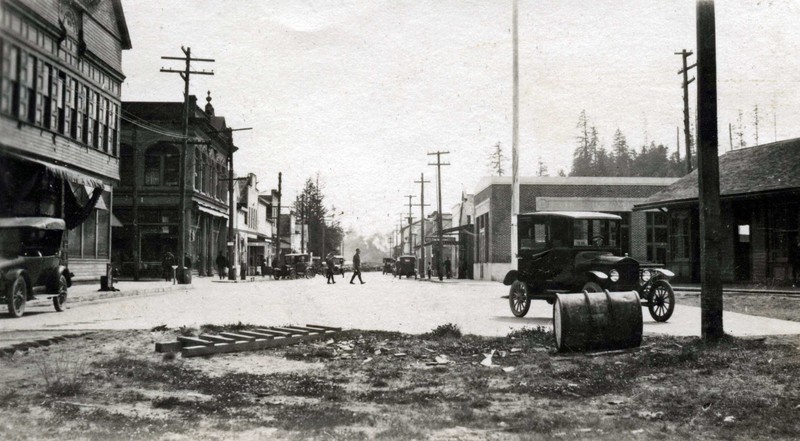
Ilwaco Street Scene c. 1888.
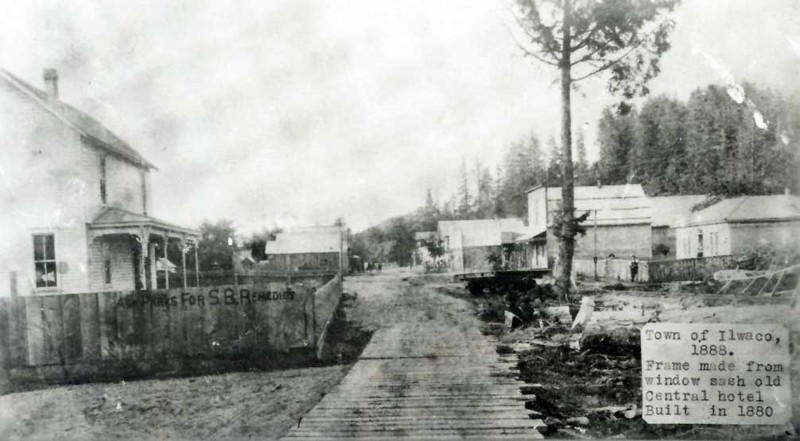
Ilwaco Railroad tracks on 1st Street looking South.
.jpg)
Business Block Ilwaco. First St. looking South c. 1930s.
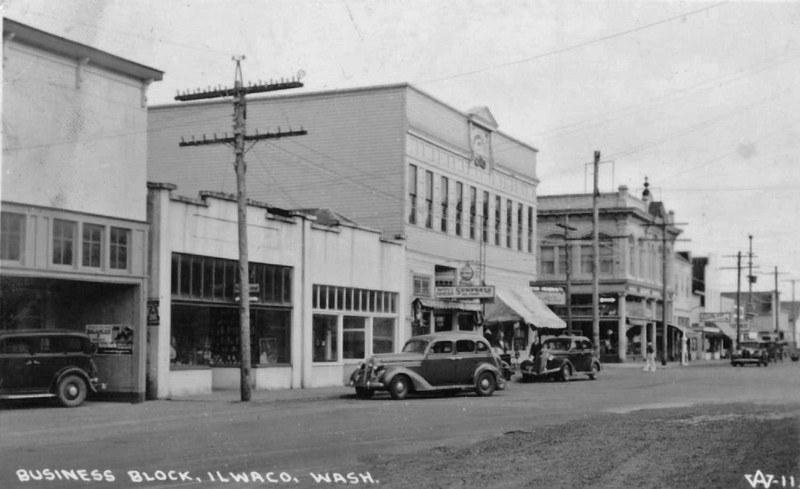
Southwestern Washington Bank, c. 1915. Built in 1895, with the Oddfellows on the 2nd floor.
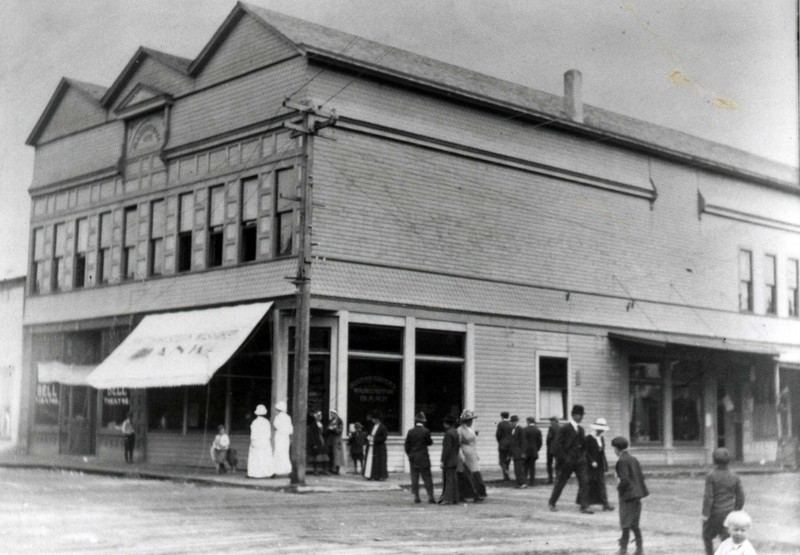
Group of people in front of Southwestern Washington Bank
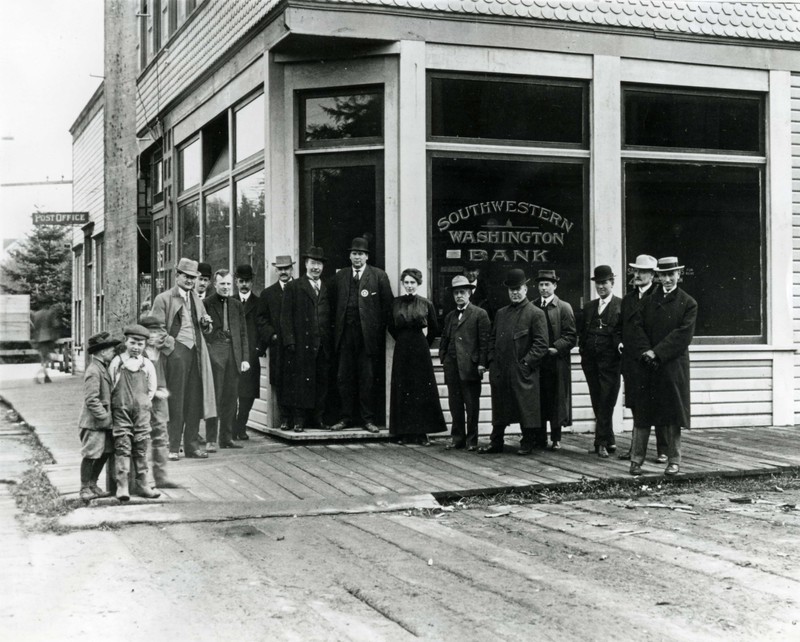
Weathers' photograph c. 1963. The Tribune building.
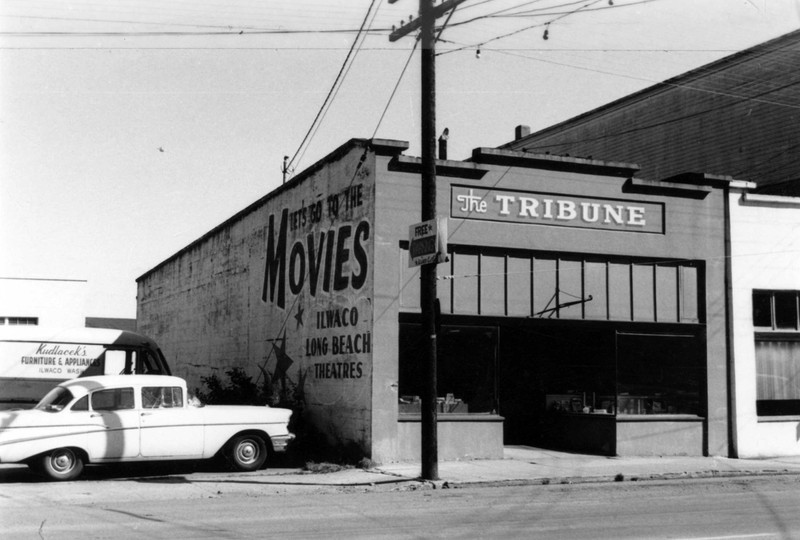
March 1 1968 Tribune Building on 1st Street.
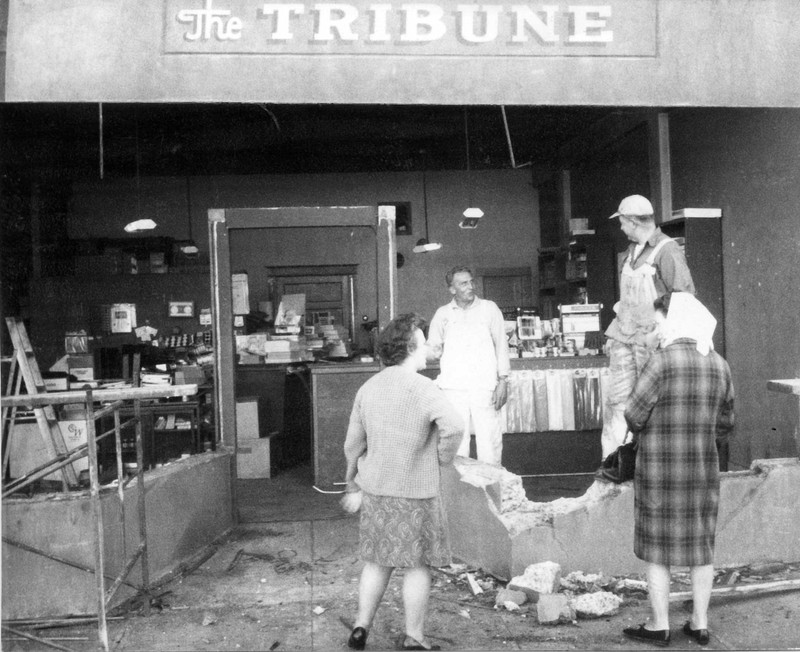
General Merchandise Store in Ilwaco. A.E. King is pictured with his arm in a sling.
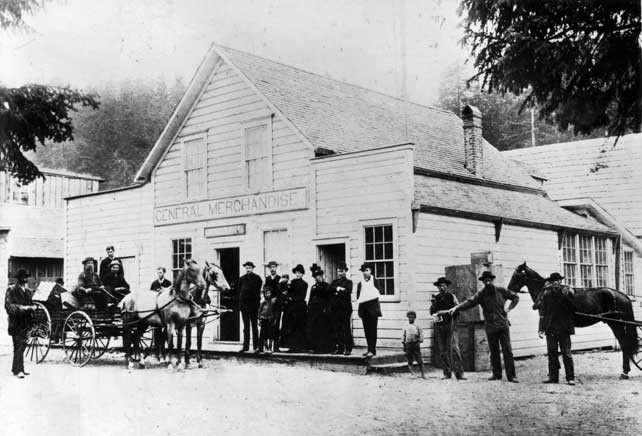
Troops in Ilwaco at Railroad Depot during WWI.
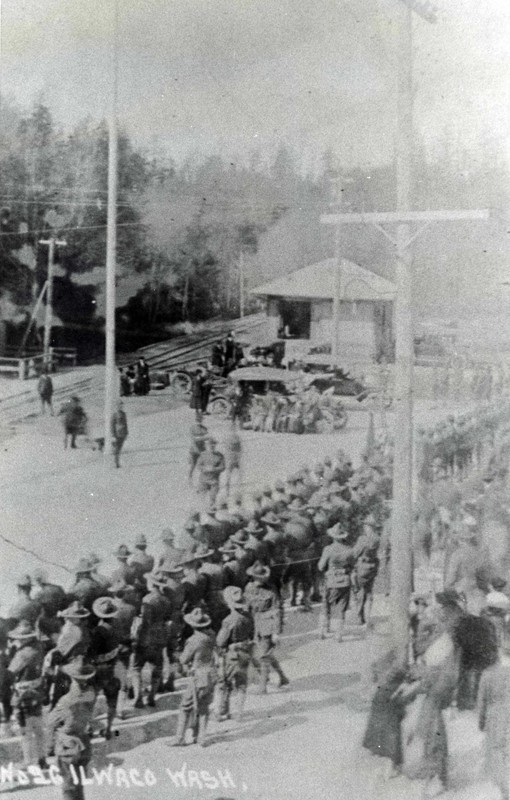
Engine #5 at the Ilwaco Depot.
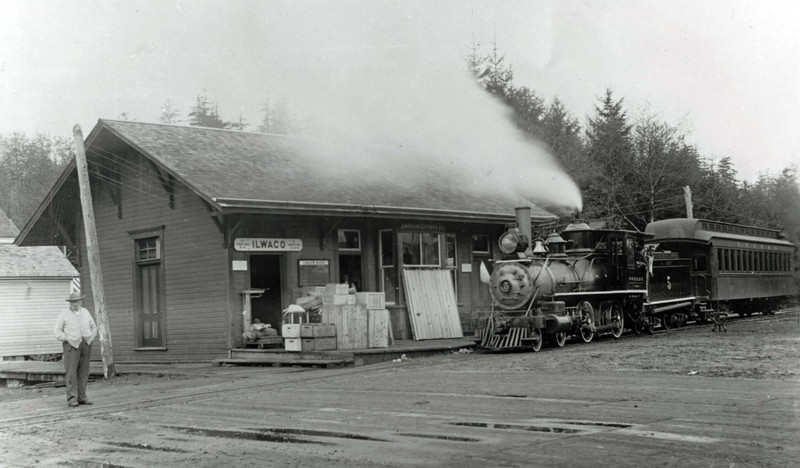
Weathers photograph c. 1963 showing the Ilwaco Freight Depot in it's original location.
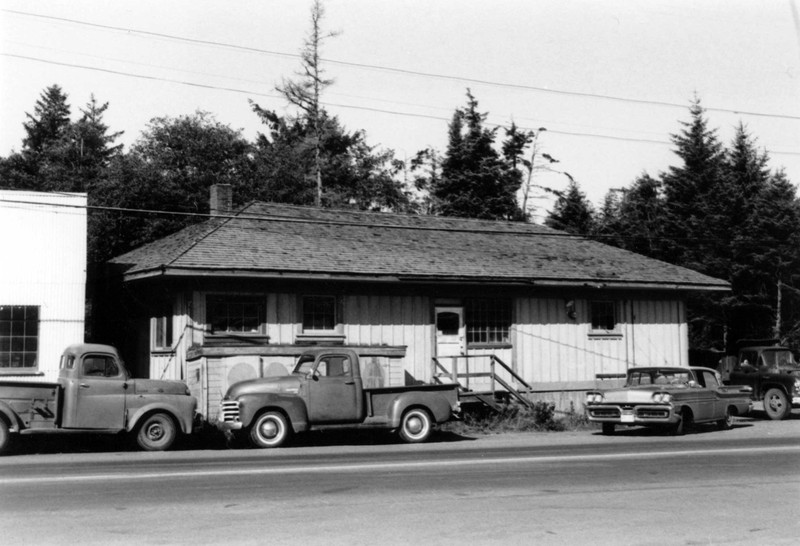
Henry Woodruff Saloon, Ilwaco c. 1920
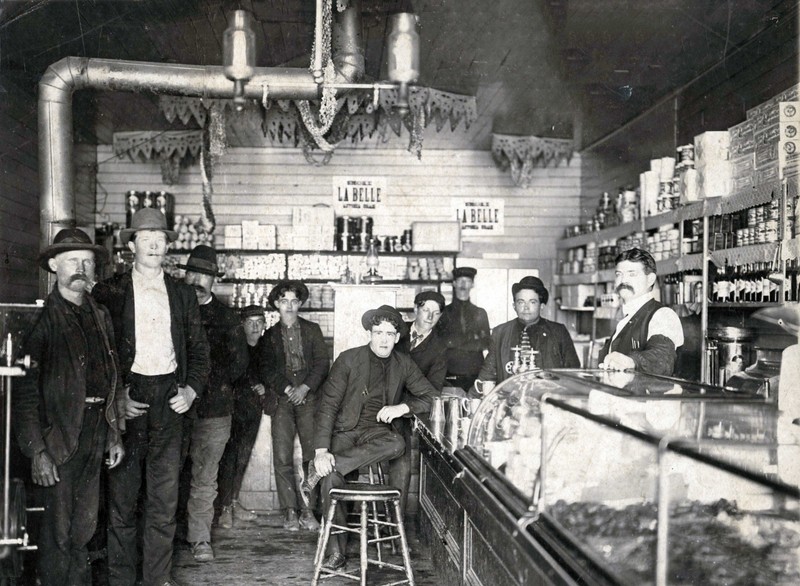
Henry Woodruff's Confectionairy in Ilwaco c. 1910.
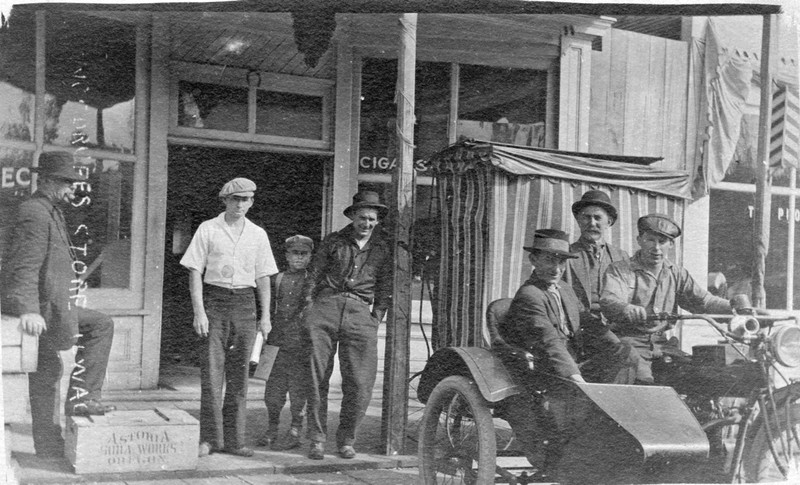
Ocean Beach Hospital in Ilwaco c. 1940-50s.
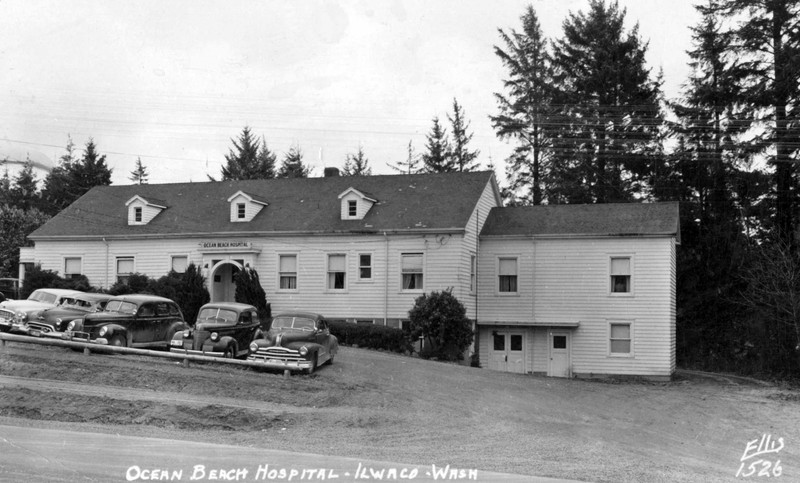
Ocean Beach Hospital, Ilwaco 1966.
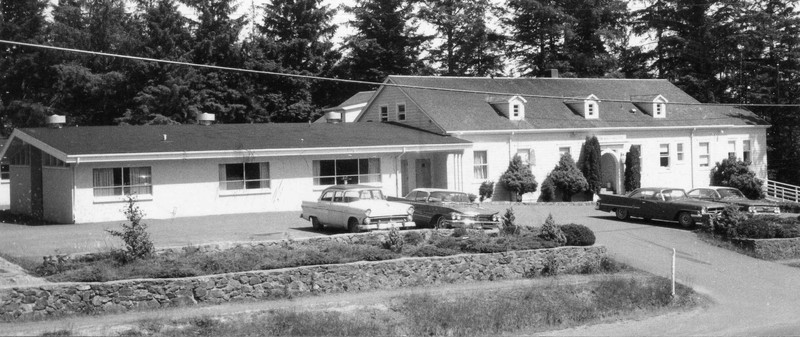
Backstory and Context
Text-to-speech Audio
The Southwestern Washington Bank of Ilwaco Scandal
In 1923, a banking scandal centered in Ilwaco rocked the state of Washington’s business and political world. The Southwestern Washington Bank of Ilwaco was located at the corner of First and Spruce in the first floor of the Odd Fellows building. The Commercial and Financial Chronicler reported on the story.
“According to press dispatches from Olympia and South Bend, Wash., under date of Sept. 5 and 6, appearing in Seattle and Portland papers, Myron F. Sinclair, formerly Vice President and Cashier of the Southwestern Washington Bank of Ilwaco., a small institution, on Sept. 6 pleaded guilty to the embezzlement of $49,900 of the bank’s funds and was sentenced by Judge Hewen in the Superior Court at South Bend on the same day to from 4 to 15 years with hard labor in the penitentiary at Walla Walla. State Senator Percy L. Sinclair, the former president of the bank and father of the convicted man, it was said, had surrendered himself on the same date to the prosecuting attorney in South Bend and was in the custody of the Sheriff. Definite charges in his case, it was said, awaited further investigation by the State Superintendent of Banking. The Bank was closed, it was said, on September 4 by the State Banking Department.”
The trial of State Senator Percy L. Sinclair took place in January 1924 in Chehalis and centered on his knowledge of the Bank’s financial condition and his responsibility for reporting it. The “New Review” of Rosberg, Oregon reported on the trial with the headline: “Sinclair Takes Witness Stand – Blames Son Myron – Declares That He Did Not Know He Had Overdrawn His Account or That He Had Information.”
The trial focused on whether Percy Sinclair was active in the bank’s day-to-day operations. Many well-known Ilwaco businessmen were called to testify that Sinclair was often seen at the bank and signed many documents. R.A. Hawkins, Manager of the Columbia River Packers Association; C.H. McKinney, Assistant Superintendent of the Ilwaco division of Union Pacific; J.B. Woods, a cranberry grower; Lynn Purdin, publisher of the Ilwaco Tribune; and Norman Howerton, who had worked at the Bank for 2 years before it was closed all testified before the court. Percy’s son Myron was brought from the Walla Walla penitentiary as a witness. He was unable to explain the alleged fictitious credits to his father’s account. When asked if his father had access to the Bank's books at all times, young Sinclair replied, "Not when I could beat him to it."
On January 28, 1924, State Senator Percy L. Sinclair was sentenced in Lewis County Superior Court to 18 months to 3 years in the penitentiary for making a false report of the condition of the Southwestern Washington Bank at Ilwaco of which he was President. It was reported that the Judge said “You are now past 60 years of age and have not many more years over your head. It is the view of the court quite punishment enough, so far as you are concerned, that you were convicted at all. But public policy requires that penalty should be imposed.” The paper went on to report that “Sinclair wept as sentencing was imposed, his attorneys comforting him.”
Henry Woodruff Confectionary
In the mid-1980s Joan Mann interviewed Ilwaco “old timer” John (Jack) G. Williams. This is his recollection of Henry Woodruff (1857-1920).
“Henry Woodruff ran a place down there next to Doupe’s. There was a store in front where he sold crackers, cookies, cheese, soda water, ice cream and peanuts. Then you could go into a kind of back room where he had pool tables and card tables. He could cook you something to eat there too. We had a doctor in Ilwaco who was Russian. He always claimed he’d been around the world a good deal, but he found Henry Woodruff’s a very expensive place to eat, because he had to have three drinks of whiskey to get nerve enough to eat there. And then he had three drinks afterward to cut the grease out of his throat. Henry had a wooden leg and one eye that kind of watered. My wife Julia told of how one time she went into the shoemaker’s down there, and Henry had his wooden leg on, and this fellow was tacking his sock up it. Julia didn’t know anything about wooden legs, she was only a girl. She was greatly taken aback with the shoemaker driving tacks into Henrys leg.
Henry’s was a kind of hangout for the younger generation from thirteen to about twenty years old. They didn’t have anywhere else to go, and they could get soda water there and something to eat. My brother Lew told this story: He was going to Portland Academy (that was like high school) and he had gotten all smarted up pretty good. He came rolling back on vacation and he went into Henry’s, and was going to question Henry on business ethics. And he asked him, ‘How do you figure percentage?’ Henry said he didn’t know too much about figuring percentage, but he did know that if he bought something for two bits and sold it for four bits, he wasn’t losing anything. Henry was a fine fellow. He lived up over the store.”
Sources
Commercial and Financial Chronicle, Volume 117, Part 1; The Oregon Statesman Journal, Salem Oregon; The Chehalis Bee-Nugget
Johnny Stories, Scenes from My Boyhood in Old Ilwaco” By John (Jack) G. Williams as told to Joan Mann, ©1987
CPHM Photo Collection
CPHM Photo Archive - 1988.76-171.381c
CPHM Photo Archive - L1984.239-171.113.11
CPHM Photo Archive - 1992.50-171.521.13
CPHM Photo Archive - 2005.25.141
CPHM Photo Archive 2007.3.1
CPHM Photo Archive - 1989.78-171.417d
CPHM Photo Archive 2015.20.19
CPHM Photo Archive - No-ACCT#-3490-9-B
CPHM Photo Archive - L1984.39-171.49b
CPHM Photo Archive - 1987.118-171.303
CPHM Photo Archive - 1985.113-171.176e
CPHM Photo Archive
CPHM Photo Archive
CPHM Photo Archive - 1988.43-171.362.127
CPHM Photo Archive - L1984.22-170.16.2z
CPHM Photo Archive - 1994.32-171.592
CPHM Photo Archive
CPHM Photo Archive - L-1984.69-171.55a
CPHM Photo Archive - 2005.025.300
CPHM Photo Archive - 2012.035.001
CPHM Photo Archive
